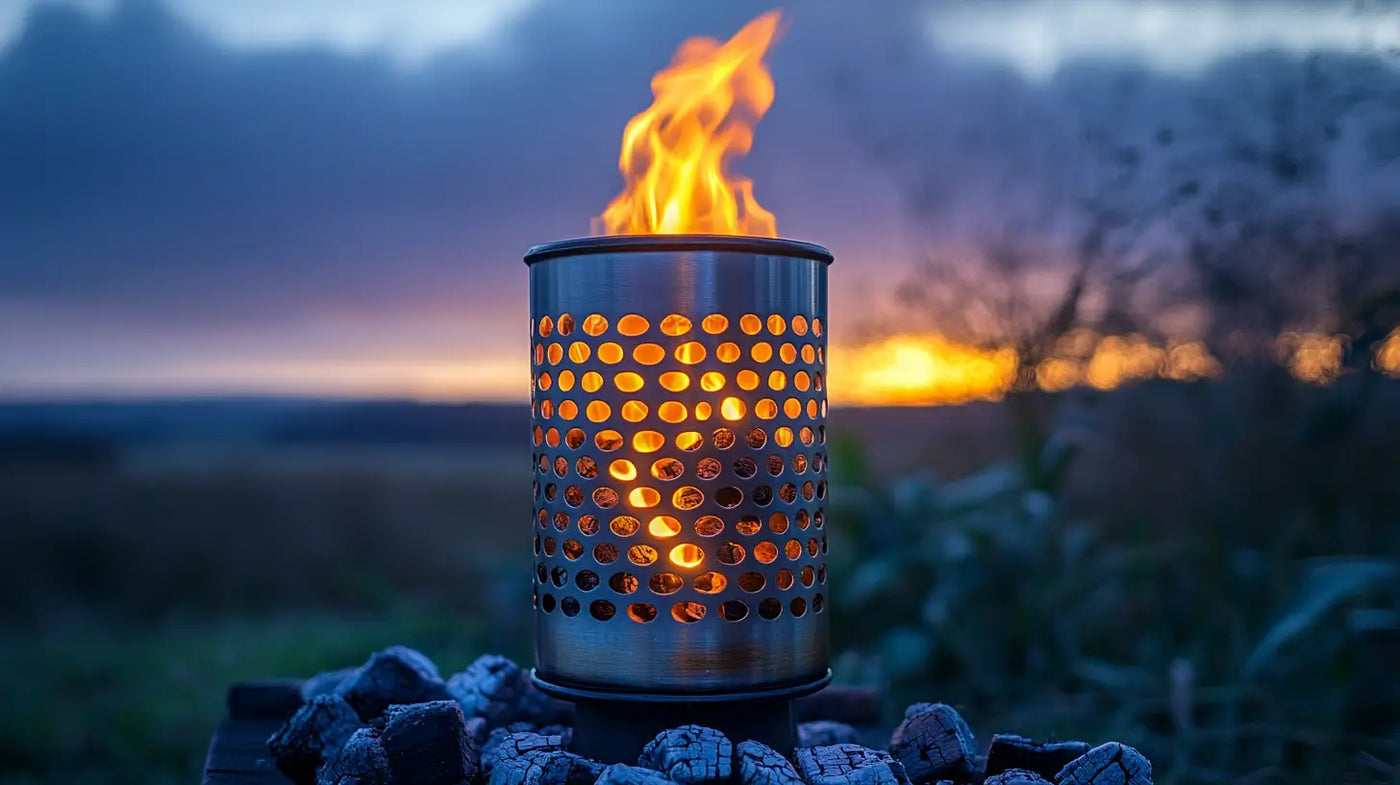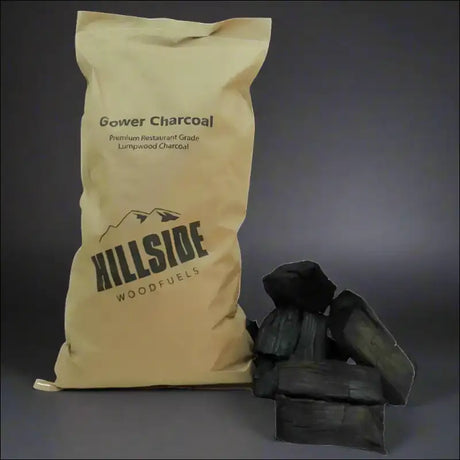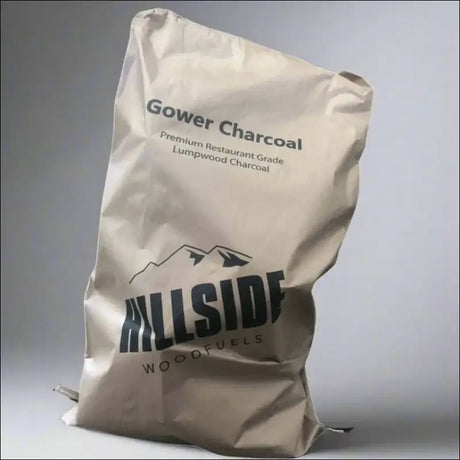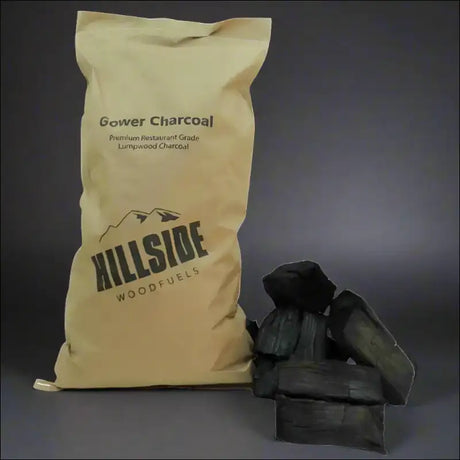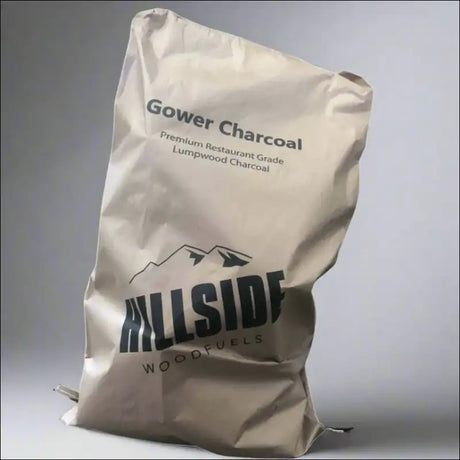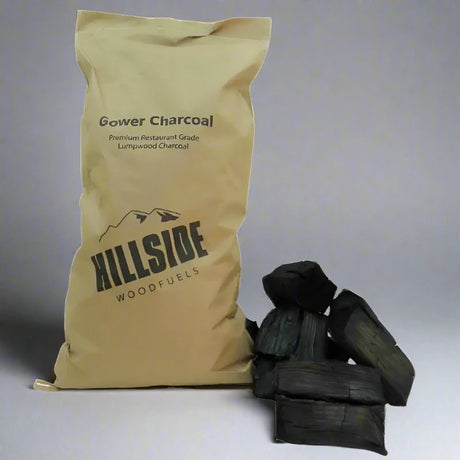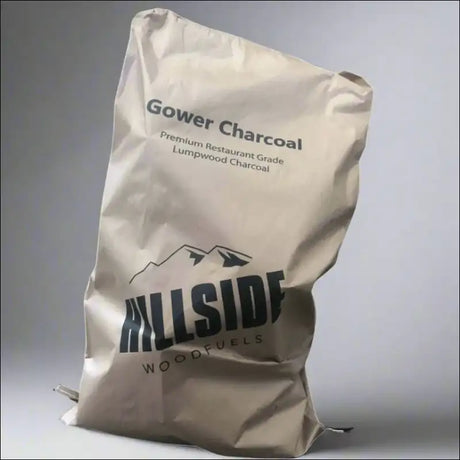As the summer sun begins to warm up the British Isles, thoughts turn to lazy afternoons in the garden, the sizzle of food on the grill, and the unmistakable aroma of a proper barbecue. But before you fire up your grill, you're faced with a crucial decision that can make or break your outdoor cooking experience: lumpwood charcoal or briquettes?
This age-old debate has divided BBQ enthusiasts for years, with passionate advocates on both sides. Today, we'll dive deep into the world of barbecue fuels, exploring the differences between lumpwood charcoal and briquettes, their origins, production methods, and environmental impact. By the end of this article, you'll be well-equipped to make an informed choice for your next backyard cookout.
What Are Lumpwood Charcoal and Briquettes?
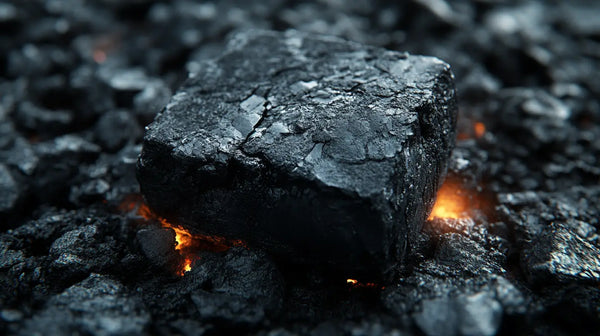
Before we pit these two fuel types against each other, let's understand what they actually are.
Lumpwood Charcoal
Lumpwood charcoal, also known as lump charcoal, is the most natural form of charcoal available. It's made by burning wood in a low-oxygen environment, a process called pyrolysis. This removes moisture and other volatile compounds, leaving behind pure carbon in irregular, chunky shapes that resemble the original wood pieces.
Briquettes
Briquettes, on the other hand, are manufactured charcoal products. They're typically made from sawdust and other wood by-products, which are ground into a fine powder, mixed with binders and additives, and then compressed into uniform shapes – usually pillow-shaped nuggets.
The Origins: A Brief History of Charcoal and Briquettes
The use of charcoal dates back to prehistoric times, with evidence of its use in cave paintings. For thousands of years, charcoal was primarily used for heating and metalworking. It wasn't until the 20th century that charcoal became popular for cooking.
Lumpwood charcoal has been around for millennia, but briquettes are a more recent invention. They were first patented in 1897 by Ellsworth B. A. Zwoyer. However, it was Henry Ford who popularised them in the 1920s. Ford, ever the innovator, created briquettes from wood scraps and sawdust left over from Model T production. He named them "Ford Charcoal Briquettes," which later became known as Kingsford Charcoal.
How Are They Made?
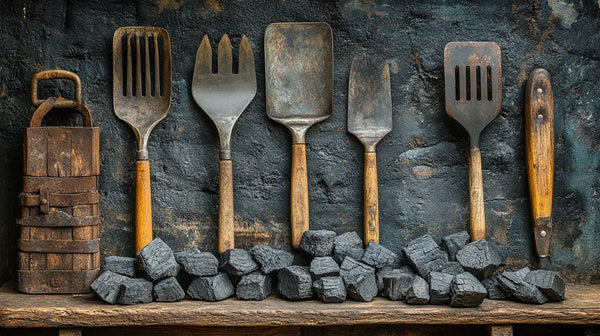
Understanding the production process of both lumpwood charcoal and briquettes can shed light on their differences and help you make an informed choice.
Lumpwood Charcoal Production
The process of making lumpwood charcoal is relatively simple and has remained largely unchanged for centuries:
- Hardwood is harvested and cut into manageable pieces.
- The wood is stacked in a low-oxygen environment, such as a kiln or earthen pit.
- The wood is slowly burned at high temperatures (around 300°C) for several days.
- As the wood burns, water and other volatile compounds are driven off, leaving behind pure carbon.
- The resulting charcoal is cooled, sorted, and packaged.
Briquette Production
The production of briquettes is a more complex, industrialised process:
- Wood by-products (sawdust, wood chips, etc.) are collected and ground into a fine powder.
- The wood powder is mixed with various additives, which may include:
- Binders (typically starch) to hold the briquette together
- Accelerants to make the briquettes easier to light
- Ash to control burning
- The mixture is compressed into uniform shapes using high pressure.
- The shaped briquettes are dried in large ovens.
- Finally, they're cooled, packaged, and distributed.
The Great Debate: Lumpwood vs Briquettes
Now that we understand what lumpwood charcoal and briquettes are and how they're made, let's compare them across various factors that matter to the average British BBQ enthusiast.
1. Flavour
When it comes to imparting flavour to your food, many grill masters swear by lumpwood charcoal. Being pure wood, it tends to give food a more authentic, smoky flavour. Different types of wood can even impart unique flavours – for example, oak lends a different taste than hickory or fruitwoods.
Briquettes, while still capable of providing a good BBQ flavour, are often considered less flavourful than lumpwood. This is partly due to the additives used in their production, which can sometimes impart a chemical taste, especially if not fully lit before cooking begins.
2. Heat and Burn Time
Briquettes generally burn longer and at a more consistent temperature than lumpwood charcoal. Their uniform shape and density allow for a steady, predictable burn, which can be advantageous for longer cooking sessions or when precise temperature control is needed.
Lumpwood charcoal, on the other hand, burns hotter but faster. It's excellent for searing steaks or other foods that benefit from high heat, but it may require more frequent replenishment for longer cooks.
3. Ease of Use
Briquettes are often considered easier to use, especially for beginners. Their uniform shape makes them easy to stack and arrange in the grill, and their consistent burn makes temperature control more straightforward.
Lumpwood charcoal can be trickier to work with. The irregular shapes can make it challenging to stack and may lead to uneven heat distribution if not arranged carefully. However, many experienced grillers prefer the challenge and control that lumpwood offers.
4. Ash Production
One significant difference between the two is the amount of ash produced. Briquettes tend to produce more ash due to the additives used in their production. This can make clean-up more of a chore and may require more frequent ash removal during long cooking sessions.
Lumpwood charcoal produces significantly less ash, making clean-up easier and reducing the risk of ash smothering your fire during long cooks.
5. Cost
Generally speaking, briquettes are cheaper than lumpwood charcoal. They're mass-produced and made from wood by-products, which keeps costs down. Lumpwood charcoal, being a more 'natural' product, tends to be more expensive.
However, it's worth noting that lumpwood charcoal is often more efficient, producing more heat per kilogram than briquettes. So while the upfront cost may be higher, you might use less over time.
6. Sustainability and Eco-Friendliness
The environmental impact of your BBQ fuel is an increasingly important consideration for many British grillers. Both lumpwood charcoal and briquettes have their pros and cons in this area.
Lumpwood charcoal, when sourced responsibly, can be a very sustainable option. It's a natural product with no additives, and if it comes from well-managed forests or is made from waste wood, it can have a relatively low environmental impact.
Briquettes, on the other hand, make use of wood by-products that might otherwise go to waste, which is a point in their favour. However, the additives used in their production and the energy-intensive manufacturing process can offset this benefit.
Ultimately, the sustainability of either option depends largely on the specific product and how it's sourced and produced. Look for charcoal or briquettes certified by the Forest Stewardship Council (FSC) for the most eco-friendly options.
Which is Preferred for BBQ?
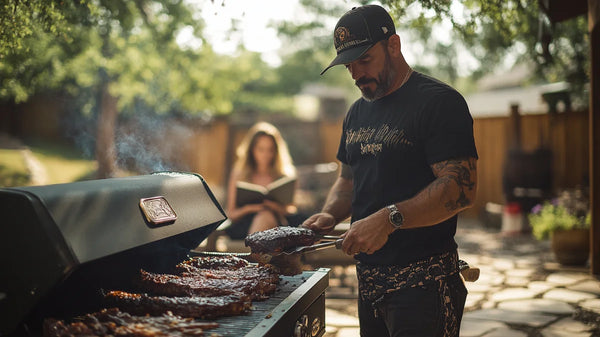
The preference for lumpwood charcoal or briquettes often comes down to personal choice and the specific demands of what you're cooking. However, there are some general trends:
- For high-heat grilling, especially for steaks and burgers, many prefer lumpwood charcoal. Its ability to reach high temperatures quickly makes it ideal for achieving that perfect sear.
- For low and slow cooking, like smoking or barbecuing large cuts of meat, briquettes are often favoured. Their consistent, long-lasting burn is well-suited to these longer cooking sessions.
- Many professional chefs and serious BBQ enthusiasts prefer lumpwood charcoal for its pure, smoky flavour and high heat output.
- Beginners often start with briquettes due to their ease of use and consistent results.
The Chemical Question: Additives in Briquettes
One of the main criticisms levelled at briquettes is the use of chemical additives in their production. While modern briquettes are much improved from earlier versions, they do contain binders and other additives that some purists prefer to avoid.
Common additives in briquettes include:
- Starch (usually cornstarch) as a binder
- Borax to aid release from the mould during manufacturing
- Sodium nitrate to aid ignition
- Limestone to create the characteristic ash colour
It's worth noting that these additives are generally considered safe when used as directed. However, if you're concerned about additives, look for natural briquettes that use minimal additives, or stick to lumpwood charcoal.
Making Your Choice: Lumpwood or Briquettes?
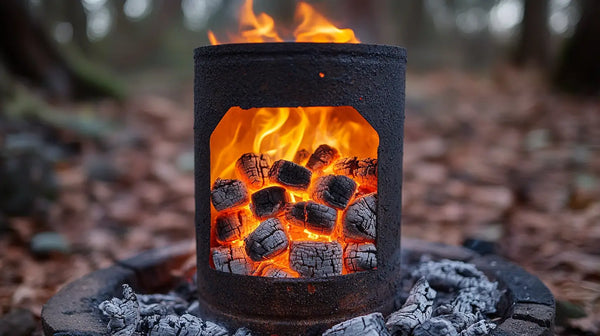
So, after all this information, how do you choose between lumpwood charcoal and briquettes? Here are some guidelines:
Choose lumpwood charcoal if:
- You prioritise flavour above all else
- You're cooking foods that benefit from high heat, like steaks
- You don't mind tending the fire more actively
- You're concerned about additives in your fuel
- You don't mind paying a bit more for a premium product
Choose briquettes if:
- You value consistency and long burn times
- You're new to charcoal grilling
- You're cooking for long periods or need to maintain a steady temperature
- You're on a tighter budget
- You don't mind some additives in your fuel
Conclusion: The Best of Both Worlds?
While the debate between lumpwood charcoal and briquettes will likely rage on in British gardens for years to come, many experienced grillers have found that the best approach is to use both, depending on the situation.
You might use lumpwood charcoal for high-heat grilling and flavour-forward dishes, and keep some briquettes on hand for longer cooking sessions or when you need more consistent heat. This approach allows you to master different grilling techniques and get the best of both worlds.
Remember, the most important thing is to enjoy the process of outdoor cooking and the delicious results it produces. Whether you choose lumpwood charcoal, briquettes, or a combination of both, the real joy of a British BBQ comes from gathering with friends and family, enjoying good food, and making the most of those precious sunny days.
So fire up your grill, choose your fuel wisely, and get ready to create some mouthwatering meals and lasting memories. Happy grilling!
Frequently Asked Questions About Charcoal and Briquettes
1. How long does charcoal burn in a BBQ?
Lumpwood charcoal typically burns for 2-3 hours, while briquettes can last up to 4-5 hours. However, burn time can vary depending on factors like airflow, grill design, and weather conditions.
2. Can you reuse charcoal for grilling?
Yes, you can reuse partially burned charcoal. After your BBQ, close all vents to extinguish the fire. Once cooled, separate the ashes from the unused charcoal. The remaining charcoal can be reused in your next grilling session.
3. Is charcoal ash good for plants?
Charcoal ash can be beneficial for plants in small quantities, as it contains potassium and can help balance soil pH. However, use it sparingly and avoid ash from briquettes, which may contain additives harmful to plants.
4. How do you light charcoal without lighter fluid?
You can use a chimney starter, electric charcoal starter, or natural fire starters like wood wool firelighters. These methods are often preferred as they don't impart chemical flavours to your food.
5. What's the difference between natural and instant light charcoal?
Natural charcoal is pure carbonized wood, while instant light charcoal is infused with accelerants to make it easier to light. Instant light varieties can impart chemical flavours to food and are generally less preferred by BBQ enthusiasts.
6. Can you use charcoal in a gas grill?
It's not recommended to use charcoal in a gas grill unless the grill is specifically designed for dual fuel use. Using charcoal in a standard gas grill can damage the grill and void its warranty.
7. How do you properly dispose of charcoal ash?
Allow the ash to cool completely, then wrap it in aluminum foil and dispose of it in a non-combustible outdoor trash bin. Never dispose of ash in a plastic bin or indoors due to fire risk.
8. What's the best way to store charcoal long-term?
Store charcoal in a cool, dry place in an airtight container. A metal bin with a tight-fitting lid is ideal. Avoid areas prone to moisture, as damp charcoal can be difficult to light and may develop mold.
9. Can you use charcoal briquettes in a smoker?
Yes, charcoal briquettes can be used in a smoker. Their consistent burn rate makes them suitable for long smoking sessions. However, some prefer to use a mix of briquettes and wood chunks for added flavour.
10. How much charcoal should I use for grilling?
As a general rule, use about 30 briquettes for small or portable grills, 50-75 for medium-sized grills, and 75-100 for larger grills. For lumpwood charcoal, fill your grill to about 50-75% capacity depending on your cooking needs.
11. Is grilling with charcoal bad for your health?
When used properly, grilling with charcoal isn't significantly worse for your health than other cooking methods. However, charcoal grilling can produce potentially harmful compounds. To minimize risks, avoid charring meat, use marinades, and grill plenty of vegetables.
12. Can you use charcoal in a fireplace?
It's not recommended to use charcoal in a standard fireplace. Charcoal burns hotter than wood and produces carbon monoxide, which can be dangerous in an enclosed space not designed for proper ventilation.
13. How do you extinguish a charcoal grill quickly?
To quickly extinguish a charcoal grill, close all vents and the lid to cut off oxygen supply. If you need to extinguish it immediately, you can carefully sprinkle water or sand over the coals, but be cautious of steam and flying ash.
14. What's the difference between Japanese Binchotan and regular charcoal?
Binchotan is a high-grade Japanese charcoal made from oak. It burns at a higher temperature, produces almost no smoke or spark, and can be reused multiple times. However, it's significantly more expensive than regular charcoal.
15. Can you use charcoal briquettes for crafts or art projects?
Yes, charcoal briquettes can be used for various craft projects. They can be ground into powder for homemade black paint or ink, used as a natural deodorizer, or even as a medium for rustic outdoor candle holders. Always ensure proper ventilation when working with charcoal indoors.

